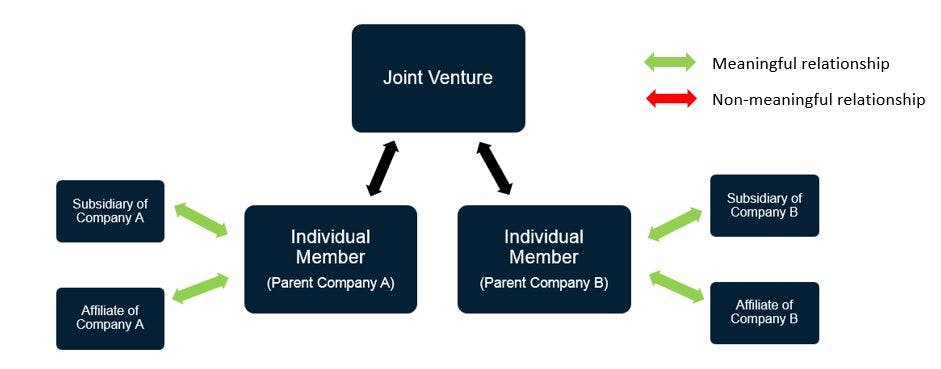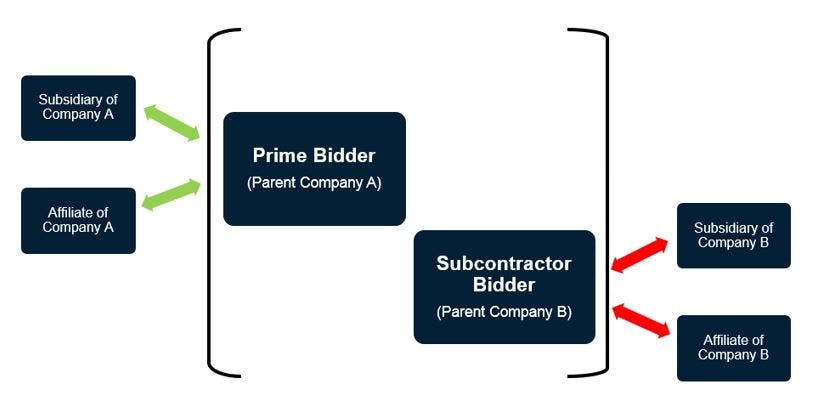
OASIS Contract On-Ramps Update: Important changes to consider
Now that the OASIS SB Pool 1 Open Season On-Ramp submission deadline has come and gone, we wanted to take a moment to share what we’ve learned over the past few weeks since the original On-Ramp solicitation was posted.
Several revisions related to teaming, in particular, were significant for those considering a future OASIS On-Ramp. In short, GSA has loosened how they evaluate teaming arrangements – allowing offerors to form Contractor Teaming Arrangements (CTAs) that enable them to use the past performance of their partner for an OASIS proposal submission. This is an important change that may open up the OASIS contract vehicle to many that were previously shut out. We’ve provided a detailed summary of this change below.
Over the next few weeks and months, GSA will be releasing a series of Open Season On-Ramps for their OASIS Unrestricted (UNR) and OASIS Small Business (SB) contract vehicles:

The quarters noted above are based on the government fiscal year. These dates are subject to change so it will be a good idea to follow the solicitations closely on FBO.
After solicitations have been released, proposals are generally due in 45 to 60 calendar days, so turnaround times are quick. If you are considering submitting an offer it is critical that you begin reviewing your ability to submit a successful offer now.
Baker Tilly has developed a proprietary Self-Scoring Proposal Optimization Tool (SPOT) that analyzes contracting data and determines the most favorable combination of relevant experience projects.
Winning an OASIS Award through Strategic Teaming
It is no secret that the “best-in-class” OASIS contract vehicle is highly exclusive. With a limited number of contracts awarded on each OASIS pool, prospective contractors must prove that they are highly qualified in the areas of relevant experience, past performance, systems and certifications. While subject to change on future On-Ramp solicitations, on previous iterations of the unrestricted vehicle, prime offerors were essentially on their own (with few exceptions) to score points on the proposal. However, on OASIS Small Business (SB), the solicitation allows contractors to team with one or more contractors to earn points in areas where they are lacking. As long as contractors stay within the requirements identified in the solicitation, the right capture strategy may be the most important factor in getting your company onto the OASIS SB vehicle.
OASIS SB prospects can establish Contractor Teaming Agreements (CTAs) in the form of a Joint Venture (JV) or a Prime / First-Tier-Subcontractor CTA, but not both. Below are some of the conditions for these agreements, as well as some key areas where contractors can use the rules to their benefit.
Submitting your offer as a Joint Venture
In a Joint Venture, the members of the CTA must all be registered small businesses unless the members are engaged in an SBA approved Mentor-Protégé relationship, by which the mentor may be a large business.
The JV is a distinct official legal bidding entity and will be responsible for proposal submittal, but with regards to the proposal evaluation criteria, the solicitation specifies whether the criteria must be met by one or all members of the JV. For example, if the JV itself does not have relevant experience projects, then each member can include their individual relevant experience, but each member must submit one Primary Project. For Pool Qualification Projects and Secondary Projects, there is no minimum number of projects that must be provided by an individual member. Additionally, all members must have an acceptable accounting system per the Acceptability Review. In order to receive points for a given system, certification or clearance, all members must meet the qualifications. Lastly, in a Mentor-Protégé JV when the mentor is a large business, the mentor may submit a maximum of one Pool Qualification Project, two Primary Projects and two Secondary Projects.
Submitting your offer as a Prime / Sub Team
Contractors may team using a prime contractor /subcontractor CTA, however this CTA is limited to one prime and first tier subcontractors only. For this approach, there are no limits to the number of Relevant Experience Projects or Pool Qualification Projects that must be provided by a specific team member. However, the prime contractor must have an acceptable accounting system, and in order to gain points for other systems, certifications and clearances, the prime is responsible as well. This, in particular, is a powerful change to the previous solicitation that introduces a great deal of flexibility for offerors. For example, primes that do not have pool qualification projects could obtain them from a sub. Additionally, there are no restrictions on the number of teams that first tier subs can be on.
Taking Credit for Project Experience and Qualifications within your Corporate Structure
Joint Venture members and prime contractors can also take credit for relevant experience projects, systems, certifications, and clearances from subsidiaries outside of the official legal bidding entity, as long as:
- The entity is within their corporate structure (parent, subsidiary, division and/or affiliate)
- A meaningful relationship can be determined when one of the following conditions exists:
- A Meaningful Relationship Commitment Letter (MRCL) has been signed by both parties
- The relevant experience project, system, certification or clearance is clearly identified and the applicability is described.
- An entity is a wholly owned subsidiary of a parent organization.
- An entity is a parent of a wholly owned subsidiary.
- An entity operates under a single internal operational unit.
- An entity operates under a consolidated accounting system.
- An entity operates under a consolidated purchasing system.
- An entity operates under a consolidated human resources or personnel system.
- An entity operates under common policy and corporate guidelines.
- The operating structure between the entities includes internal organizational reporting lines and management chains for lines of business that operate across the formal corporate subsidiaries.
Below are illustrations of which proposal elements will be accepted in a JV and prime/sub CTA scenario.
Joint Venture
In the above illustration, a Joint Venture may utilize the experience of the subsidiaries and/or affiliates of the JV members, as long as a meaningful relationship can be established between the subsidiaries and/or affiliates and the participating member of the JV.

Prime/Sub CTA
As shown in the above illustration, the prime contractor may utilize the experience of their own subsidiaries and/or affiliates through a MRCL, however according to section L.5.1.9(i) of the solicitation, the offeror may not establish a MCRL with the subsidiaries and/or affiliates of their subcontractors in a prime/sub CTA.

For more information on this topic, or to learn how Baker Tilly specialists can help, contact our team.
